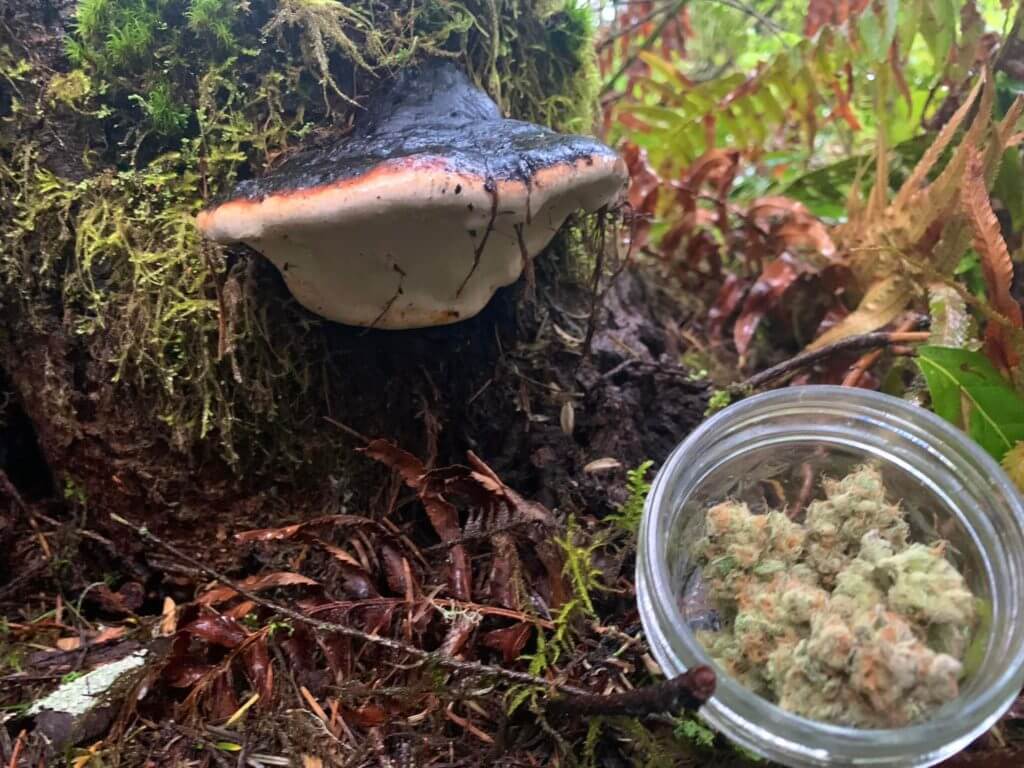 If you ask different cannabis consumers in California what is wrong with the regulated market you’ll get answers like poor quality, a lack of variety, no safe and easy access to a retail dispensary, and, of course, high taxes and prices.
If you ask different cannabis consumers in California what is wrong with the regulated market you’ll get answers like poor quality, a lack of variety, no safe and easy access to a retail dispensary, and, of course, high taxes and prices.
All of these complaints are aimed at specific links in the cannabis supply chain that was established by Proposition 64 in Cali and is being emulated in legalization efforts in states across the country.
Of course, there is some excellent weed being grown in California but the state’s regulations encourage people to grow bad weed and the supply chain ruins nearly all of the exceedingly rare good weed.
It’s easy to look at it now and say that the cannabis supply chain is broken, but the truth is that it is working just as the powers-that-be intended it to. The problem is that cannabis isn’t just another commodity like cars or computers, and the traditional model of the ‘supply chain’ just doesn’t work with this plant.
Using California as an example, there are currently over two dozen different license types regulated by the state’s Department of Cannabis Control (DCC). These licenses are essentially the ‘links’ of the supply chain.
Of these license types, roughly half are just variations of different cultivation licenses (indoor, outdoor, mixed-light, etc.), However, none of those cultivation licenses allow you to trim the cannabis you harvest – that requires a different license, along with more fees, compliance demands, and headaches.
The same goes for packaging the buds you grew, or making basic ice water hash and infusing it in some pre-rolls. More licenses. More money. More problems.
If your licensed farm is a block away from the nearest licensed dispensary and they want your whole harvest, you’ll still need a licensed distributor to get sample batches to a licensed testing lab – perhaps hours away – before charging the farmer to deliver the goods down the street.
All of these licenses cost money. A lot of money. The state and local governments are reaping hundreds of millions of dollars each year on license and permit fees alone.
[RELATED READING: Taxed to Death - Follow One Gram of Weed from Seed to Sale]
A fair analogy is what we are seeing in housing markets nationwide. Potential landlords are charging “Application Fees” for prospective tenants to be considered for eligible properties. They keep that application window open for months raking in way more money in fees than they would in rent.
Two dozen license types not only ensure that this easy, up-front money will continue to pour in, but it has the dual purpose of weeding out the wooks and paving the way for corporate cannabis.
Just look at what happened when Prop 64 passed… hell, LOOK AT THE DCC SITE RIGHT NOW. Under “Large” cultivation licenses it says – By law, large size cultivation licenses cannot be issued until after January 1, 2023
Of course, like Tyler the Creator once said, “So that was a fuckin’ lie” and we immediately saw investor-backed brands and huge corporations move in and simply “stack” as many “Small” cultivation licenses as they could onto one large parcel of land resulting in what we have today, a marketplace flooded with mids crashing prices, crushing true small farmers, and making a mockery of the regulations.
As we have mentioned many times before, the state wants to rake in as many license fees as possible, but administratively it only makes sense that they’d love to do so with as few clients as possible. License-stacking fits that business model perfectly.
Some would say that it is a sign of a broken supply chain, but Cali has no problem creating Supply, it’s Demand that is lacking.
SHORTENING THE SUPPLY CHAIN WILL UNLEASH THE TRUE POTENTIAL OF CANNABIS
Anyone out there who either grows their own cannabis or can get it directly from the grower knows that represents the ideal cannabis supply chain.
Unfortunately, not everyone can grow their own, and not everyone knows someone growing enough to share. This is where a taxed and regulated market should come into play, providing Supply to meet Demand, legally.
So, arguing that there should be zero taxes and zero regulations is not really productive, we all agree that there’s way too much of both currently.
Continuing with our comparison between cannabis licenses and the links of the supply chain, and having just acknowledged that the ideal supply chain would be two links long at the most, better use of brainpower would be trying to figure out how we could eliminate as many links in that chain as possible while satisfying regulators, operators, and consumers alike.
Shortening the supply chain – or the length of time and miles that a bag of weed must endure getting to the consumer – is crucial if the regulated California cannabis market is to begin realizing its true potential.
Certain links are absolutely necessary like cultivation, manufacturing (extraction), lab testing, and others, but traditional on-farm tasks like trimming, packaging, and even selling directly to the public could easily be rolled into one license type. This in itself would lead to a massive spike in the quality of the cannabis that makes it to market as nobody knows cannabis quality control better than the cultivator who just spent months bringing the product to harvest.
Some farmers, fully aware of the nightmarish journey their product will be taking to retail, have adjusted their harvesting schedules, or their dry/cure schedule, to allow that process to happen “in the bag” or “on the shelf”, hoping that the consumer will find something a bit more fresh.
These gimmicks don’t work but this is the mentality of operators who are barely scraping by, doing anything to prioritize quantity over quality, slaves to a schedule set by a supply chain that requires constant coordination with other brands entirely.

Buds grown by folks like this and trimmed by someone else get crammed into flattened mylar bags and rubber-banded together by someone else, and tossed in a tote in the back of a Sprinter van driven by someone else for God-knows-how-long before sitting on a dispensary shelf owned by someone else for another eternity until someone buys it sight unseen/unsmelled… does anyone wonder why both new and seasoned cannabis consumers are opting out of that experience?
Don’t get us wrong, we believe that everyone who wants to grow cannabis commercially should be able to do so affordably. That all cannabis should be lab-tested for purity and potency. That every town in America should have a competitive cadre of cannabis dispensaries in operation to provide safe access to those who cannot get it elsewhere.
THE MICROBUSINESS LICENSE
Though not a perfect solution, California does offer a Microbusiness License type that can offset much of the compliance and financial burden that would come with trying to obtain and maintain several different license types.
This license type is specifically designed to be a roadmap for small operators to vertically integrate like the big boys but on a craft scale.
Microbusiness licenses in Cali range in cost from $5,000 per year to $120,000 per year, based on the licensee’s annual revenue.
The DCC defines the Type 12 Microbusiness License as follows:
The Type 12 license is for businesses that do at least three of the following activities at one location:
-
Cultivation – up to 10,000 total square feet
-
Manufacturing – use of non-volatile solvents, mechanical extraction or infusion
-
Distribution or distribution transport-only
-
Retail – storefront or non-storefront.
So, under this license, you could cultivate, process, and sell your own cannabis all in-house, and there are operations like this open for business right now in California. Not many though. At the beginning of this year, just over 300 Microbusiness Licenses had been granted statewide.
There are still an exorbitant amount of rules and regulations and high barriers to entry that must be cleared, which helps to explain why more people have not taken advantage of this license type. For many people, the 10k sq. ft. cap on cultivation “limits growth” too much. In reality, that’s a lotta pot, especially in a mixed-light or indoor environment with multiple harvests each year. But, maybe not enough to pay back rabid investors.
Things like distribution, packaging, or trimming are all real tasks that need to be done but all we’re saying is that the fewer hands that touch the weed, the better it will be for the consumer.
When you get weed directly from the grower or, better yet, grow it yourself – anytime you shorten the supply chain as much as possible – you not only gain a deeper appreciation for the hard work that goes into every bud, but you suddenly understand the power of fresh, intact trichomes and the full spectrum experience they deliver.
This is what keeps you coming back for more.
This is what can save regulated cannabis.

















